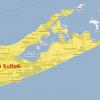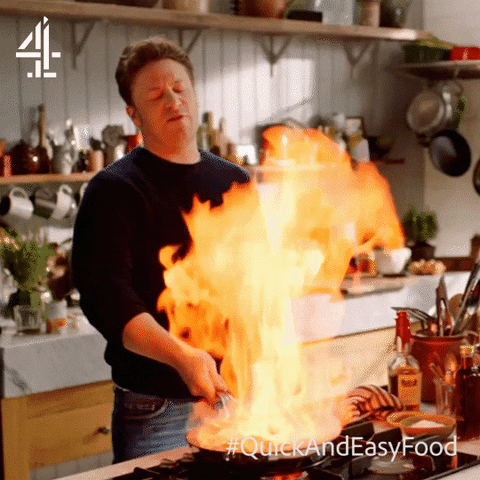-
Posts
3,372 -
Joined
-
Last visited
Content Type
Profiles
Blogs
Forums
American Weather
Media Demo
Store
Gallery
Posts posted by EasternLI
-
-
12 minutes ago, EastonSN+ said:
I do have a question, is phase 7 warm in January in a La Nina? I know it's cold in December.
May become important as we keep looping 5 through 8.
Well it's complicated and even ensembles are struggling lately. You see how the mjo is on the move in that photo. But you can also see the residual stuff hanging out by the MC and also near South America throughout the whole run. So you can end up with a mash-up pattern with competing influences. I think bluewave has mentioned that before too. It also needs to be strong enough to force anything. Sometimes it isn't. So increased caution is suggested with these charts this particular year. But here's the link for the Italian site where I find them you can check it out.
-
 2
2
-
-
2 minutes ago, EastonSN+ said:
What I love is seeing blocking remain in place.
The PAC keeps re shuffling duo to MJO loop, but the blocking keeps us in the game throughout.
Was just checking out the MJO from that run. But the biggest question, for me personally, is what happens beyond the end of these runs.
-
 3
3
-
-
-
-
If someone asked me if I'm ok to trade a early December cold shot. For a chance of something possibly better a little later. I'm going to say yes to that 100% of the time. Climo is trash in early December anyway.
I was actually ready to punt this whole winter totally back in the summer. When looking at things. But right now? The punter is cut and this is interesting.
-
 4
4
-
-
-
3 minutes ago, LibertyBell said:
So does that mean we're in a repetitive pattern with the first half of each month mild and the second half of each month coldish?
Not necessarily. It's just the way eps and gefs are looking currently and with some agreement. Still a lot of question marks. It's an interesting set of circumstances to ponder though.
-
 2
2
-
-
Yup, mjo is going to pass the MC again. Beyond that, 2nd half of December, it's going to continue to the west pacific again. Similarly to how it already has this fall. I'm a big fan of that potential timing. But the way the 500mb NH pattern is also evolving on ensembles lately, is looking to be towards one that could legit heavily damage the PV. That MJO pass has the potential to do real damage. To me, the situation is incredibly interesting. None of that is in any reliable timeframe currently. So we continue to watch with great interest moving forward.
-
 5
5
-
-
-
17 minutes ago, LibertyBell said:
Exciting times ahead....I wonder how the winters usually go when we get an SSW this early?
Happy Thanksgiving !!!!
Happy Thanksgiving

December SSW could, theoretically, offer up a -AO winter. Instead of when it happens in February and spring is ruined. We'll see what happens. Many question marks but really interesting. I remember reading somewhere how, should one occur, la nina and WQBO favors downward coupling too. Having trouble finding that paper right now though.
-
 1
1
-
 1
1
-
-
28 minutes ago, LibertyBell said:
I've seen that a SSW is forecast for later in December?
I don't know if I'd call for one, but it absolutely looks to be one option. Fascinating watching things unfold right now as a long range aficionado.
-
 2
2
-
-
La nina has been taking shots from the high AAM state (el nino like). Westerly wind has been punching holes in the trades. That didn't happen at all last year. What looks like a strengthening la nina trade burst upcoming, looks to be related to the jet extension at that time. Amplifying the return flow in that period. We'll see what happens after that.
-
 3
3
-
-
5 minutes ago, snowman19 said:
It’s favorable, however, the twitterologists are sharing the wrong MJO phase 8 composites. They are sharing +ENSO composites which features +PNA, the correct composites, which is -ENSO, December, MJO 8, show the -PNA/RNA which is to be expected in the current -ENSO background state, especially with a firmly entrenched, healthy La Niña like we have now. It’s still favorable (-AO/-NAO, -EPO/-WPO), however the -PNA obviously supports the western troughing seen on the ensemblesWell stop looking at them, then lol
-
 2
2
-
 3
3
-
-
6 minutes ago, Allsnow said:
Looks like p8 at some point in December which is usually cold in the east
It does. There's a lot going on.
-
 2
2
-
-
Tropical eps still looking good. Like the 12z yesterday, basically.
-
 3
3
-
-
1 minute ago, EastonSN+ said:
We can definitely score in that look.
Well yeah, but my point is, December SSW follows that look if we follow the Ural Blocking playbook.
-
 3
3
-
-
-
I agree. Beautiful day today.
I also agree with @bluewave
A guarded optimism is how I'm going. The tropical looks have had a large spread in the longer term between individual members. Saw that last year too. Need things to settle down some. Different looks this year though. We're getting some nice ones more often than not and the picture is not similar to last year, to me. Record Pacific warm pool driving the record -pna last year. We don't have that this time. The AAM state is also completely different. The volcano from last year is a wild card. The NAO look is legit.
We do seem to see some nice ingredients this year. Does mother nature forget to set the timer? Or does dinner come out amazing?
TBD
-
 2
2
-
-
-
-
-
-
I mentioned that November could possibly hold more clues about winter. We're discussing the tropical aspects, which are very interesting in their own right. But there's still more to the story.
It's also seemingly a month with persistent Urals blocking. The ensembles continue that theme until the end of the month. Here's the 5 day mean from the gefs for example. Plus 500mb obs from NOAA for the month so far.

Why would that matter?
That needs to be watched because it has potential to force a December SSW. And that leaves open the possibility of a -AO winter. The following paper explains how that's possible. Another fascinating possibility to watch for. We'll just add it to this year's list. It's getting pretty long.

Ural Blocking as a Driver of Early-Winter Stratospheric Warmings
-
 9
9
-
 2
2
-
-
8 minutes ago, LibertyBell said:
Interesting if we could trace all this back to the blocking we had in October lol
That would be great. However there seems to be too much variance during October. Recent research suggests. November however, may hold many more clues. Recent research also points towards that being the case.
-
 2
2
-




.thumb.png.27e69ee98370a3e27d9fadcc624d4cdb.png)



.thumb.png.b7c6024df7dea8a7ff5dbe378ff70aae.png)


.thumb.png.b37cd61c2828d9030f4ee72d452251e0.png)
.thumb.png.96567e570a9f9bdeb3b73a30ce7adc8e.png)



.thumb.png.a0386699761208e992f9440641f6d79e.png)




November 2022
in New York City Metro
Posted
Urals ridge is getting really interesting now. That's something that starts to unfold between now and day 6. Not day 10+. 18z GFS just went nuts with it again. So that's the 2nd run in a row and the 12z Euro was very close.
The GFS nukes the polar vortex as a result. 2 runs in a row now. Also of note, this loosely matches the expected response from the paper I posted too. So maybe there's something here. That's also really cool to see on a model now. Felt a post about this was in order. Eyes peeled on this thing now.